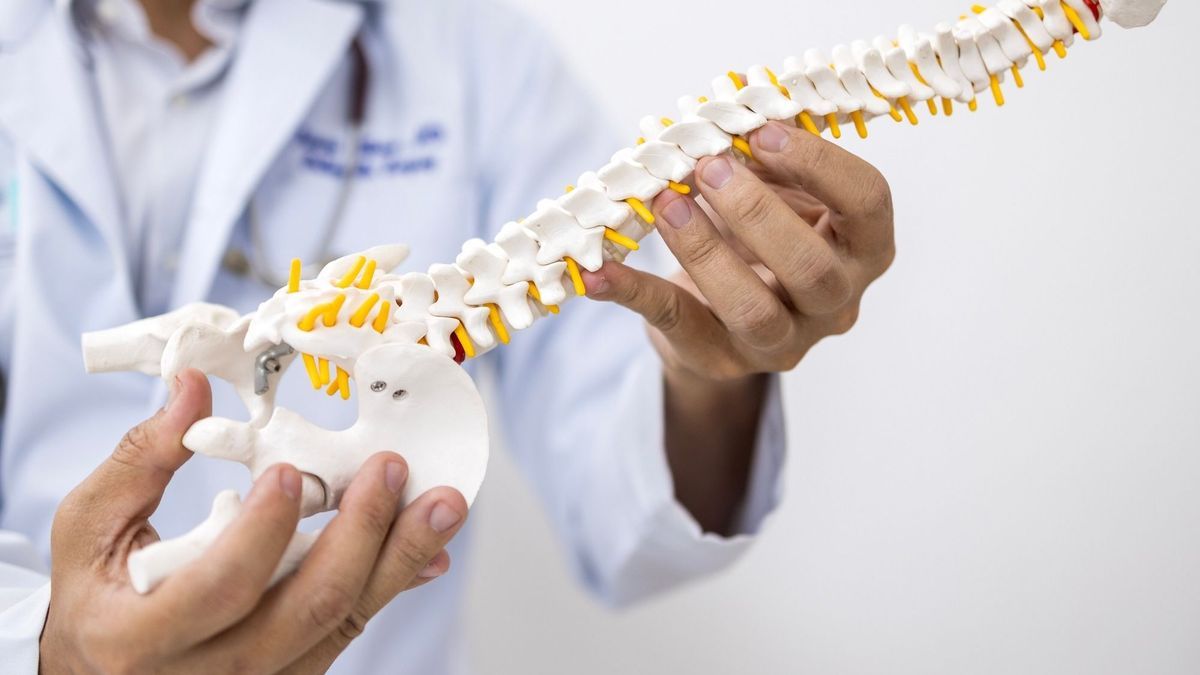
Joint wear also affects the spine and more particularly the vertebrae. In the event of back pain that is more or less intense and tends to persist, it is better to consult your doctor. What are the mechanisms causing zygapophyseal osteoarthritis? Which cartilages are affected? And how to treat? Update with Doctor Bahia Mediouni, rheumatologist at the Clinique du Parc in Castelnau-le-Lez.
What exactly is zygapophyseal osteoarthritis?
Is it osteoarthritis of the spine?
Zygarthrosis or posterior zygapophyseal osteoarthritis corresponds to osteoarthritis or wear of the cartilages in the posterior inter-apophyseal joints of the spine or posterior zygaphphyseals, that is to say the posterior joints which connect the back of the vertebrae. There is one on the right and one on the left.
Generally speaking, osteoarthritis is a joint disease always associated with the slow destruction of intra-articular cartilage.
In cases of zygapohyseal osteoarthritis, the joint's shock-absorbing role is no longer effective. The latter ends up weakening.
Inflammation of the synovial membrane may also occur.
Lumbar, dorsal and cervical zygarthrosis
“Zygapophyseal osteoarthritis can affect all the posterior joints of the vertebrae and therefore affect the cervical, dorsal or lumbar spine,” indicates Doctor Bahia Mediouni, rheumatologist at the Clinique du Parc in Castelnau-le-Lez. “However, we encounter a little more zygapophyseal osteoarthritis on the lumbosacral hinge, that is to say on the lower back where there are the most mechanical constraints.
What are the causes of zygapophyseal osteoarthritis?
The importance of zygapophyseal overload on the joints
The cartilages of these joints can be worn down by mechanical stress.
Overweight
This mechanical constraint (mechanical stress) can be increased by lumbar hyperlordosis (change in the position of the lumbar vertebrae of the spine), for example. “Having a significant arch increases the load on these joints. specifies the rheumatologist. Mechanical stress can also be aggravated by being significantly overweight (posterior joint overload syndrome) or carrying heavy loads.
Age
The pathology increases with age, particularly from the age of fifty.
Loss of muscle tone
Lack or reduction of physical activity can cause this pathology to appear on these zygapohysial joints.
- Prolonged sitting;
- Repeated hyper-extensions;
- Abdominal obesity.
Being overweight in the stomach and waistline increases the pressure on the back of the back.
The sport
Intensive sports practice can damage these joints. Be careful because intensive sports practice can promote the secretion of natural endorphins and mask pain.
The exercise of certain professions in hyper-extension
This may particularly be the case for people who work with their heads back and their necks upwards. Mechanics and house painters have work that can aggravate osteoarthritis in the cervical spine.
Zygapophyseal osteoarthritis on the dorsal vertebrae is less common because the dorsal spine bulges backwards and not forwards, there is less stress on these zygapophyseal joints.
What are the symptoms of zygapophyseal osteoarthritis? What are the consequences of lumbar osteoarthritis? When back pain sets in.
Lumbar zygapophyseal osteoarthritis manifests itself as lower back pain which leads to a loss of mobility (difficulty rotating the pelvis, neck, etc.). These pains have the particularity of being relieved by ante-flexion of the trunk (when the person leans forward) and of being aggravated when the person leans backwards or remains seated for a long time. “Lumbar zygapophyseal osteoarthritis can also give other symptoms such as small irradiations on the buttocks (buttock pain)”, completes the doctor. “The pain is relieved by rest, lying down or stretching the trunk forward.”
In case of zygapophyseal osteoarthritis on the cervical spine, there is cervical pain with radiation towards the bottom of the skull with Arnold's neuralgia (on the first cranial nerve) or towards the scalp and the ear.
“The pain is continuous when osteoarthritis is in the inflammatory phase,” indicates the specialist. “She can wake you up at night during this inflammatory period.”
Other symptoms may suggest zygapophyseal osteoarthritis, such as stiffness and limited range of motion. Sometimes, zygarthrosis is accompanied by neurological symptoms (muscle weakness, feeling of numbness).
How is zygapophyseal osteoarthritis diagnosed?
The doctor questions the patient looking for symptoms specific to zygapophyseal osteoarthritis in the zygapophyseal joints.
Clinical examination of the intervertebral discs is also important to guide the diagnosis. The doctor manually attempts to trigger the symptoms by reproducing spinal hyperextension.
Then, the doctor can complete the diagnosis with an additional examination such as an x-ray or a scanner to assess this osteoarthritis in the area of the intervertebral discs.
What to do in case of zygapophyseal osteoarthritis? What treatment for pain? How to relieve?
When the diagnosis is made, the doctor can offer curative treatment which can relieve the patient in the activities of daily life.
Generally, he prescribes to the person suffering from osteoarthritis a painkiller adapted to the intensity of the pain. If the pain is moderate, he suggests a simple analgesic such as paracetamol to take on demand or an anti-inflammatory ointment.
If the treatment is not effective, the doctor prescribes a few days of oral nonsteroidal anti-inflammatory drugs.
How to treat zygapophyseal osteoarthritis?
A rehabilitation
At the same time, the doctor prescribes rehabilitation through physiotherapy sessions. “The physiotherapist takes advantage of these sessions to give the patient some advice in order to teach him self-rehabilitation exercises that he will be able to reproduce at home to maintain the benefit of the physiotherapy sessions. indicates Doctor Bahia Mediouni. This bodybuilding protocol based on precise movements, supervised by a health professional, allows the patient to regain a better general posture and thus fight effectively against the return of pain.
Infiltrations
If treatment fails, it is possible to offer corticosteroid infiltrations injected into the posterior joint with the aim of calming the inflammation. Regardless of the location of the zygarthrosis, the procedure is carried out using imaging guidance (ultrasound, fluoroscopy or CT). “The risk of hematoma is minimal because we puncture superficial joints without reaching the epidural space. reassures the rheumatologist. “The procedure is carried out on an outpatient basis. There is a contraindication in the event of an infectious syndrome or a coagulation disorder. It is recommended to stop your anticoagulant treatment a few days before the procedure (after the cardiologist's approval)”.
Thermocoagulation
To treat this pathology, it is also possible to offer thermocoagulation or rhizolysis also carried out by imaging control under scanner. The technique consists of thermally destroying the sensitive nerve ending responsible for the pain using radiofrequency. This procedure is generally performed by a radiologist or a spine surgeon under local anesthesia and on an outpatient basis.
Mesotherapy
Mesotherapy sessions can also be used for analgesic purposes. “These are intradermal injections (made using small needles) where non-steroidal anti-inflammatories are combined, a small dose of muscle relaxants and a local anesthetic for loco-regional treatment of this pain. specifies Doctor Bahia Mediouni. “Count around 2 to 3 sessions in a row with a rheumatologist or a general practitioner.”
A hot water bottle
To relieve back, lumbar or neck pain, it is possible to apply a hot water bottle for a few minutes or hours to the area to be treated.

